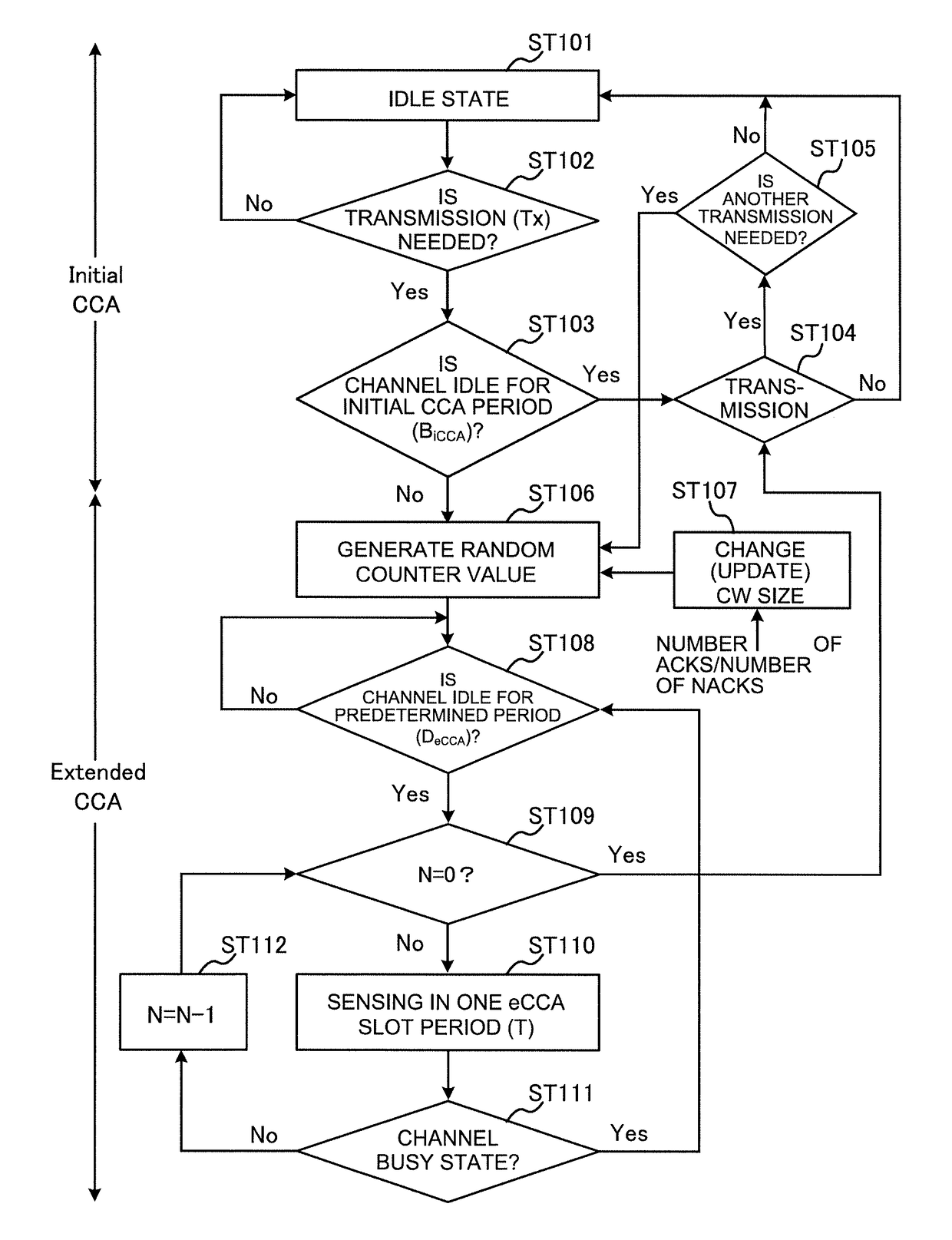Radio base station, user terminal and radio communication method
a radio communication method and user terminal technology, applied in the field of radio communication methods, can solve the problems of limited spectra of licensed bands, and achieve the effect of improving spectral efficiency
- Summary
- Abstract
- Description
- Claims
- Application Information
AI Technical Summary
Benefits of technology
Problems solved by technology
Method used
Image
Examples
first example
[0053]A case will be described with a first example where the CW size is controlled based on the number of NACKs in response to data that is included in burst transmission after listening. Note that DTX may be included in the number of NACKs, or the CW size may be controlled based on the number of ACKs, instead of the number of NACKs.
[0054]FIG. 4 is a diagram to show an example of DL transmission to which listening is applied. FIG. 4 shows a case where burst DL transmission of maximum 4 ms is configured when the result of listening shows the idle state. The duration of burst DL transmission is not limited to 4 ms and can be configured as appropriate.
[0055]According to the present embodiment, (1) the number of subframes in bursts in which the number of NACKs is counted (L subframes), (2) the cycle of bursts to count the number of NACKs (M bursts), and (3) a threshold number of NACKs (N) for deciding to expand the CW size can be configured as parameters for controlling the change of t...
second example
[0075]An example of the method of controlling the CW size in listening prior to DL transmission will be described with a second example. FIG. 6 shows an example of the listening operation according to the second example. Note that the following CW size control method can be applied to UL LBT (user terminal) as well.
[0076]When starting transmission from the idle state (which is, for example, the state the radio base station's buffer is empty) (ST101 and ST102: Yes), sensing is conducted in the initial LBT (CCA) period BiCCA (ST103). The initial LBT (CCA) period BiCCA may be, for example, 34 μs. If the result of sensing shows that a channel is available (idle state) (ST103: Yes), DL transmission is made (ST104).
[0077]If the initial CCA sensing shows that no channel is available (busy state) (ST103: No), or if transmission needs to be made for reasons other than that the idle state is assumed (for example, because there is another data transmission after ST104 (ST105: Yes)), random bac...
PUM
 Login to View More
Login to View More Abstract
Description
Claims
Application Information
 Login to View More
Login to View More - R&D
- Intellectual Property
- Life Sciences
- Materials
- Tech Scout
- Unparalleled Data Quality
- Higher Quality Content
- 60% Fewer Hallucinations
Browse by: Latest US Patents, China's latest patents, Technical Efficacy Thesaurus, Application Domain, Technology Topic, Popular Technical Reports.
© 2025 PatSnap. All rights reserved.Legal|Privacy policy|Modern Slavery Act Transparency Statement|Sitemap|About US| Contact US: help@patsnap.com



